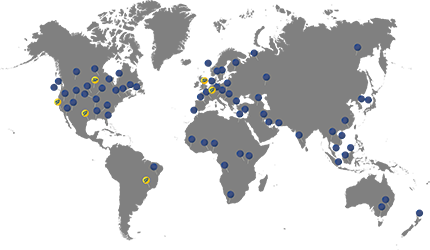News & Case Studies
- Details
- Written by Administrator
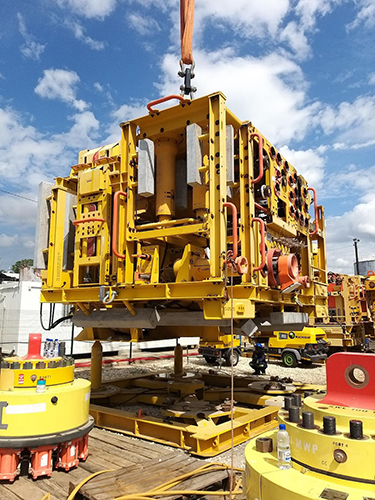 Heavy lifting specialist Sarens is using a 100t capacity Radiolink plus load cell from Straightpoint (Crosby|SP), a Crosby Group brand, to complete delivery of seven 85t Christmas trees for a major oil and gas company. It also utilised Crosby|SP’s 1,000m (3,280 ft.) range SW-HHP handheld reading device.
Heavy lifting specialist Sarens is using a 100t capacity Radiolink plus load cell from Straightpoint (Crosby|SP), a Crosby Group brand, to complete delivery of seven 85t Christmas trees for a major oil and gas company. It also utilised Crosby|SP’s 1,000m (3,280 ft.) range SW-HHP handheld reading device.
The trees (an assembly of valves, spools and fittings) are being stored in Nacala-Porto, a city on the northern coast of Mozambique, from where they will be sold on by an oilfield services company.
Sarens, a provider of crane rental services, heavy lifting and engineered transport, is responsible for offloading the trees from a vessel, transporting them to the site, and offloading them prior to temporary storage. Sarens, which boasts an extensive crane fleet in the region, selected a 250t capacity Demag CC1100 crawler crane to complete lifting operations.
Julio Paco, lifting operations supervisor at Sarens, said: “Generally my role includes preparing the daily lift plan, supervising each lifting operation, leading talks with the personnel involved in each operation, and sending weekly and monthly reports to the office.” He explained that the company’s scope of work also includes testing and inspection to ensure that the trees are working properly before they are moved onto a jobsite.
The trees are identical and measure approx. 17.8 ft. (5,438mm) by approx. 16.6 ft. (5,068mm). For each, Paco and his team utilised various items of rigging gear including chains, slings and shackles, which were sourced from Sarens’ local stock, where products range from low capacity up to 250t items.
Paco said: “We had to supply two crane operators and two banksmen to cover two shifts. As is always the case in this sector, speed and efficiency of service is paramount to delivery of our services. Knowing the weight of items as they follow their supply chain to the point of use is a necessary component of that work. With the Radiolink plus we can take readings at a safe distance using a [handheld] device.”
Crosby|SP also offers an extensive range of ATEX / IECEx products; it recently enhanced the ATEX Handheld plus with a number of standout additions: overload and calibration warnings are now displayed on an improved, larger screen. Also, it is now possible to read up to four SP load cells simultaneously, allowing the operator to monitor a multi pick-point lift from a single handheld system. This capability suits the product even further to the diverse applications that end users deliver at the coalface. Existing features remain including the product’s suitability to hazardous zones 0, 1 and 2, commonplace on oil rigs and in petrochemical plants.
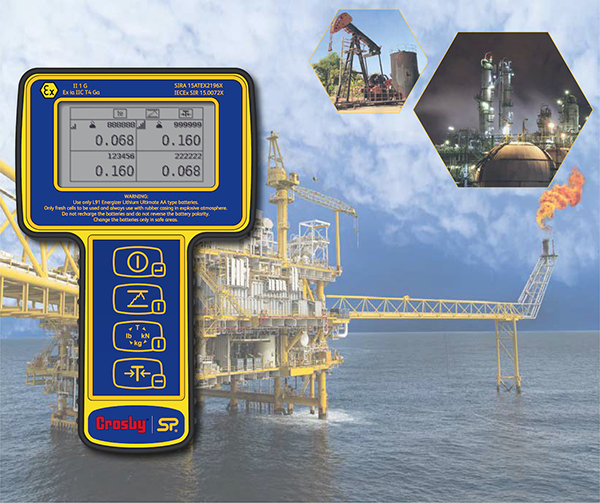
- Details
- Written by Administrator
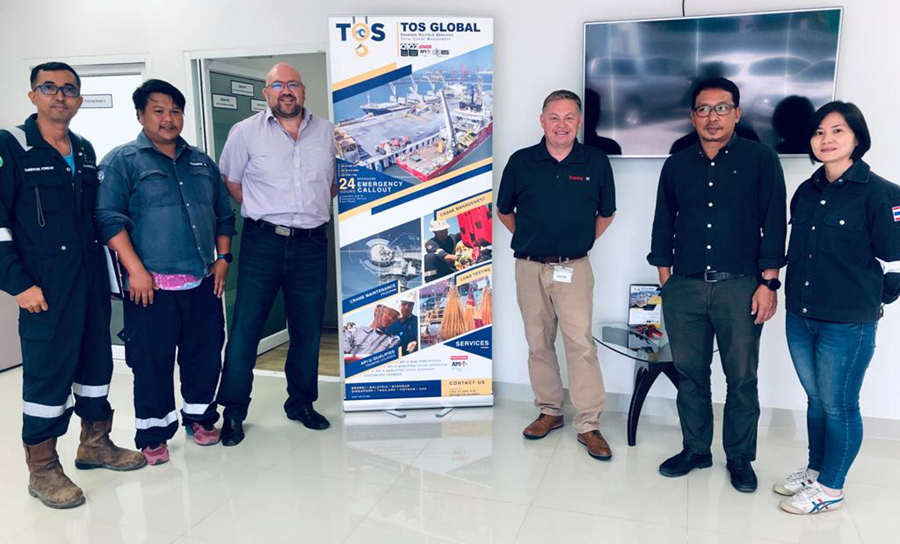
Straightpoint (SP), part of The Crosby Group, has named Thunder Oilfield Services (TOS) a distributor of its full range of force measurement equipment in Thailand.
TOS specialises in the fabrication, training, inspection, maintenance and repair of lifting equipment and components used in the offshore energy industry. It operates throughout Asia Pacific and the Middle East, with a strategic service centre located in Thailand; other key sites are widespread, including facilities in Brunei, Malaysia, Singapore and Vietnam.
Travis Dupre, CEO at TOS, said: “We place the highest priority on the health and safety of all stakeholders and protection of our partners’ assets and the environment. Supporting our business with technology that provides accurate information about loads at a safe distance—utilising state-of-the-art Bluetooth and other wireless technologies—is a natural fit.”
SP’s load cells join an extensive fleet of lifting and rigging gear that is stocked across TOS’s global hubs, where they will be used in support of day-to-day activities, offered for rental and direct sale. They will work alongside a comprehensive stock of Crosby rigging hardware as the company delivers services related to offshore operations, onshore support and training. Fabrication, inspection and maintenance of cranes and other lifting equipment in the offshore energy sector will cover the majority of the workload.
Thailand-based Dupre said: “The timing of onboarding the [SP] equipment hasn’t been perfect because we’ve encountered unexpected slowdowns related to the COVID-19 pandemic just as we were starting to gain momentum. However, that is a short-term issue; longer term, we are confident that the equipment will be integral to continued growth of the business as the offshore sector in Thailand and further afield returns to normality—and prosperity—particularly as we enter the second half of the year.”
- Details
- Written by Administrator
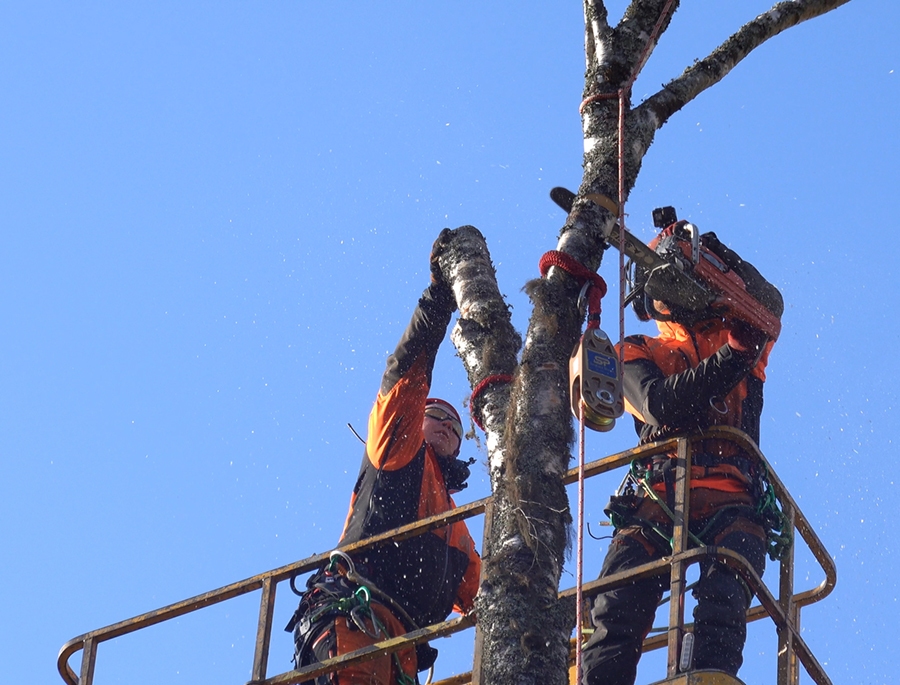
Straightpoint’s (SP) Impact Block, which measures the shock load and weight of branches as they are cut during tree felling or maintenance, is being used for education and site work in Finland.
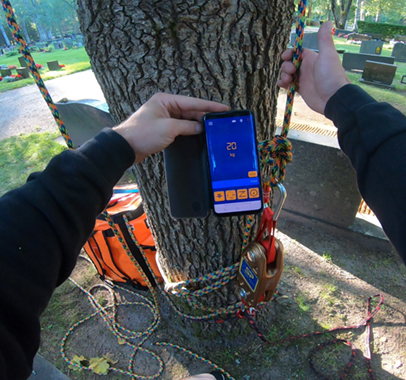 It is another example of the product filling gaps in knowledge about the forces put through rigging equipment and the weight of loads as they are cut away from trees. It has proven as important as a training device as it is a practical onsite tool, once again.
It is another example of the product filling gaps in knowledge about the forces put through rigging equipment and the weight of loads as they are cut away from trees. It has proven as important as a training device as it is a practical onsite tool, once again.
Utilising wireless dynamic load monitoring electronics and strain gauge technology, real time data can be displayed on a handheld controller, tablet or laptop at speeds up to 200Hz. Importantly, this eliminates the estimation work that often goes into arborist applications. Further, the aesthetic curves of the Impact Block combine with strength and durability to ensure a rope-friendly surface.
Mika Vainionpää, a climbing teacher at Finnish arborist school, Sedu (based in Ähtäri), said: “Unlike crane-related or other typical rigging scenarios, in tree applications professionals do not always have an anchor point above the lifting point. It’s a type of negative rigging. Every tree is different. There are no labels in a tree that say to the climber how much the rig can take. You have to study and learn where those limits are. Branches are one thing—leaves and smaller branches can limit the force—but logs can be more unpredictable.”
Vainionpää, who also owns an arborist company (arborist.fi), recently utilised a 60 kN version to measure how big the heaviest weights are during a normal climb and recorded the weights of the top and base anchors. Impact Block can be installed at the top of a tree or lower in the canopy before starting to cut limbs off. Vainionpää said he predominantly uses 12mm or 14mm Teufelberger Sirius Bull ropes.
He added: “The Impact Block adds weight and rigging to our projects, but that is outweighed by the education it gives us. Trees are very complicated and normal rigging rules don’t apply. However, we are at the lower end of our learning curve with this technology and must continue to conduct tests and deliver education before it can make a widespread difference across arboriculture. For that reason, it remains more of a training product than a site-only tool.”
Impact Block is an integral product in Vainionpää’s armoury, which includes a 27-tonne metre knuckle-boom crane that can be fitted with a grapple saw or bucket; a mobile elevated work platform; stump grinders; and a machine for pruning branches and removal of felled loads.
- Details
- Written by Administrator
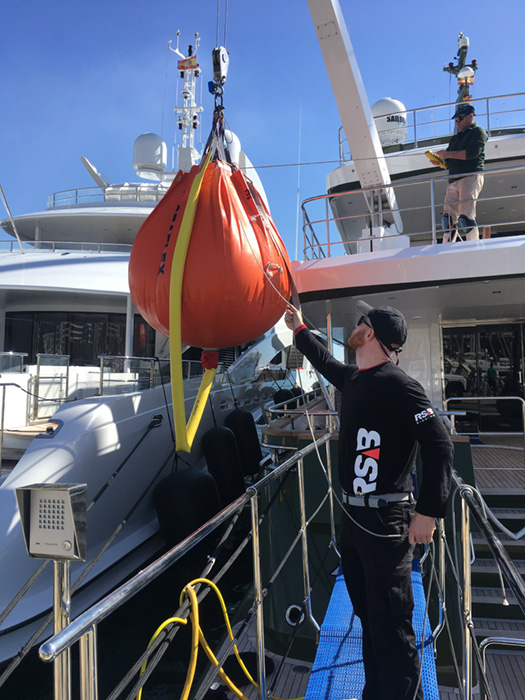 RSB Rigging Solutions (RSB) used a Bluetooth-enabled 6.5t capacity Straightpoint (SP) load shackle for load tests aboard a luxury super-yacht at Maritimo, Palma de Mallorca, Spain.
RSB Rigging Solutions (RSB) used a Bluetooth-enabled 6.5t capacity Straightpoint (SP) load shackle for load tests aboard a luxury super-yacht at Maritimo, Palma de Mallorca, Spain.
The specialist supplier of rope and running rigging to the luxury yacht sector used the wireless load shackle and water bags to test and certify the side access rail system and davit crane on the Motor Yacht Halo, a 40m luxury explorer super yacht. The work was carried out in accordance with Lloyd's Register maritime classification.
The Sanguineti Chiavari CE RINA-approved 2,000kg capacity, 360-degree rotating fly bridge deck crane is used for the deployment and recovery of the yacht’s smaller onboard “tender” vessel, which is used for excursions, taxi to shore and rescue situations. The Harken R27 access rail systems are installed to the side of the vessel to allow easy and safe access for crew during maintenance.
Anthony Eland, load test manager at RSB, said: “Two tests were performed on the deck crane: a static test at 1.25 times safe working load [2,500kg] and a dynamic test at 1.1 times safe working load [2,200kg]. The access rail system was tested to 600kg at the start, middle and end of each 3m section of track.”
Eland explained that the water weight system from Seaflex can be filled to the desired capacity to meet the weight requirements of the item to be tested. When filled with water, he said, 1kg equals 1 litre. “It is the safest and most efficient method of load testing these pieces of lifting equipment,” he added. “The [water weight] load bag uses a number of smaller shackles in its construction in order to connect the bag to the masterlink.”
He continued: “We use the load shackle for its ease of use as no connecting strops are needed. We frequently work with limited space so every centimetre in height saved is very beneficial; the compact design of the shackle minimises the length of our total test assembly and in some cases, it wouldn’t be possible to do the test without it. Also, the wind can cause instability when lifting a load and the compact bow shackle design helps to minimize the pendulum effect created.”
Two versions of the wireless load shackle are available: a long range, 2.4Ghz version providing a wireless range of 1,000m or 3,280 ft. to SP's SW-HHP handheld or software options; and, as RSB used, a Bluetooth product that can be connected to any smart phone running the free HHP app on iOS or Android at ranges up to 100m or 328 ft.
Eland said: “[Bluetooth] was one of the selling points of the product. Receiving load test data wirelessly is essential when the load is suspended. Downloading the [HHP] app to our company phones eliminates the need for a separate dedicated receiver.”
RSB regularly supplies and facilitates the installation of Harken Access Rail Systems for the suspension of people and crane cables / lifting accessories for the marine industry. In this case, it delivered the testing and inspection package for a regular customer that has subscribed to its biannual certification service.
- Details
- Written by Administrator
 Straightpoint (SP) equipment is suited to use even in the Jakarta, Indonesia monsoon season, as a recent application proved.
Straightpoint (SP) equipment is suited to use even in the Jakarta, Indonesia monsoon season, as a recent application proved.
Lifting equipment and services provider Wiguna Artha Lestari utilised an SP Radiolink plus load cell and Wireless Hand Held Plus to complete testing of a 15 ton capacity frame using a 50t capacity Tadano TG500E. Although lifting operations ceased during heavy rainfall, IP67 environmental protection meant that the load cell didn’t have to be dismantled from the hook once the load was temporarily lowered.
Jakarta can be hit by stormy weather at multiple points during the year but is especially likely to experience wet conditions when monsoons blow in from the south and east in June through September and from the northwest in December through March.
The latest wet-season assignment involved Wiguna using a 55t capacity Radiolink plus, SP’s best-selling product, and the handheld reading device to load test a frame beneath the hook of the mobile crane and record measurements against a patchwork of rainclouds.The load cell features a separate internal sealed enclosure providing the electronic components with IP (Ingress Protection) 67 (NEMA 6) even with the battery cover plate missing, making the dynamometer suitable for use in the harshest environments. The long range 2.4GHz version of the Wireless Hand Held Plus, meanwhile, provides a range of 1,000m (3,280 ft.).
Yoshiro Dharmadi, director at Wiguna Artha Lestari, said: “IP67 essentially means that equipment meeting that criteria can be dropped into a body of water up to a meter deep for half an hour. While that is not a practical scenario in terms of our use of the equipment, it gives us peace of mind given the extremes of wet weather that we endure here. We can leave the load cell on the hook and wait for the rain to stop. I can’t imagine heavy lifting applications where we’d have to take down the rigging gear in bad weather.”
“Further,” he said, “The [SP] range offers us—and our clients—great accuracy regardless of whether we are working with light or heavy loads.
Battery power
Dharmadi also pointed to the favourable battery life of the SP range; the Radiolink plus, for example, operates with standard AA batteries that offer 1,200 hours of life. The Radiolink plus (or RLP) is supplied with an update rate of 3Hz and can be easily configured to run at speeds of up to 200Hz making it ideal for dynamic force measurement. Constructed from aerospace-grade aluminium it features an advanced internal design structure, which is behind the ingress protection and, of equal importance, high strength to weight ratio.
Dharmadi added: “We provide lifting equipment for various sectors—oil and gas, construction, mining, ports, heavy industry, marine, etc.—and all present challenging applications that test the durability of our equipment, and that’s before Mother Nature has her say. Only approx. 5% of our work involves crane testing and inspection, but we utilise load cells and rigging gear for a variety of applications on a daily basis.”
Wiguna stocks eight RLPs, up to 100t capacity, which complement a core business that centres on wire rope, chain, and synthetic slings. Dharmadi said: “Business is better than last year, but competition intensifies year on year here in Jakarta. Since we are focusing on high-end customers, we are serving a niche, specialist marketplace. We are constantly looking to add to our product portfolio to become even more efficient and productive.”



